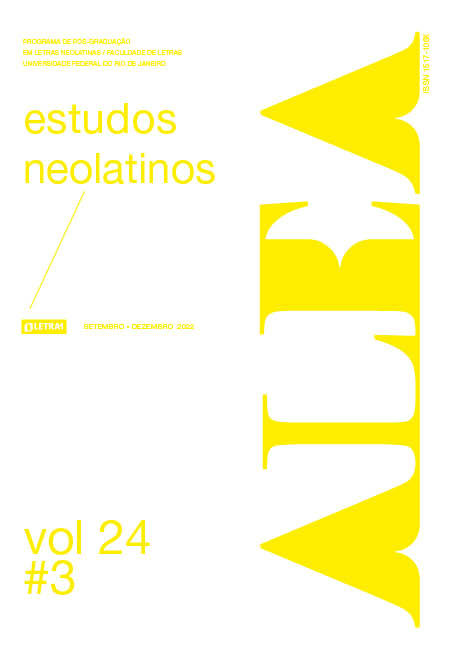“Sob a capa espessa da amnésia”: apagamentos visuais em Dora Bruder (1997), de Patrick Modiano
Abstract
Este artigo objetiva buscar no romance Dora Bruder (1997), de Patrick Modiano, o significado e a relevância do apagamento visual como recurso narrativo, materializado na ausência das imagens fotográficas e no uso da écfrase para tratar do trauma deixado pela perseguição e morte de judeus durante a Segunda Guerra Mundial. A opção do autor por negar ao leitor a exposição da menina judia desaparecida em Paris durante a ocupação alemã é a metáfora da eliminação, do apagamento, do silenciamento e da morte da memória social de um povo. Em resposta a essa amnésia imposta, a memória é usada como meio de interrogar um passado que se transforma em narrativa para permitir a reelaboração de experiências dolorosas tornadas mais compreensíveis porque dizíveis.Downloads
Published
Issue
Section
License
THE AUTHOR/S confirm/s his, her or their participation in all stages of work preparation: 1) Conception, project, bibliographical research, analysis and interpretation of data; 2) Writing and reviewing the manuscript; 3) Approval of the final version of the manuscript for publication; 4) Responsibility for all aspects of the work and guarantee for the accuracy and integrity of any part of the work. The submission of works implies the immediate cession, without onus, by all authors, of publication rights to the journal Alea, licensed under CC BY (https://creativecommons.org/licenses/by/4.0/). The authors are fully responsible for the content of the article and continue to hold all copyrights for subsequent publications of it, and should, if possible, include the reference to the first publication in the journal. Alea does not commit to returning received contributions. Authors of articles, reviews or translations will receive a copy of the journal.

